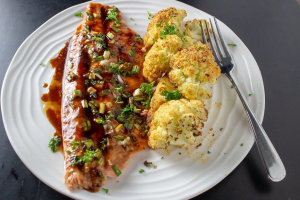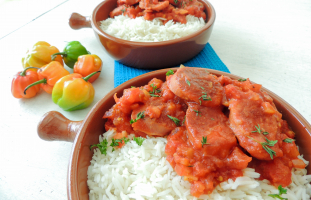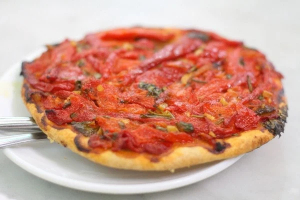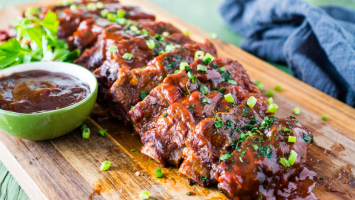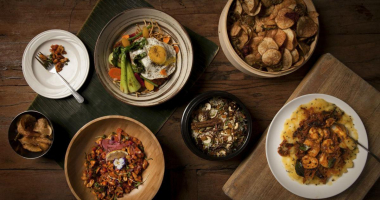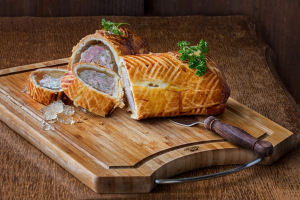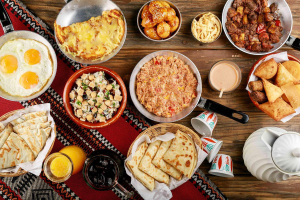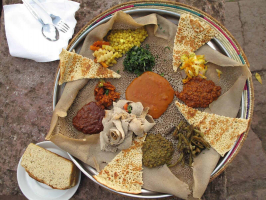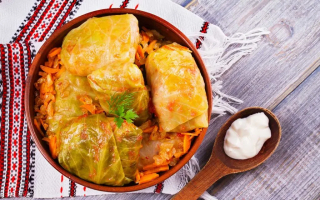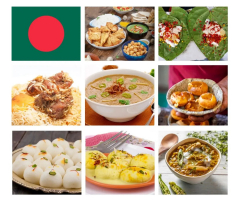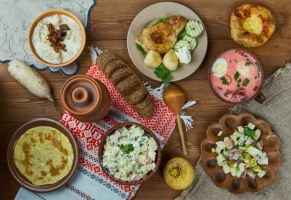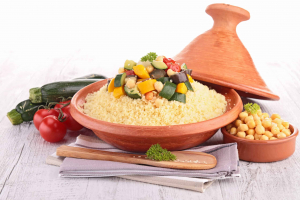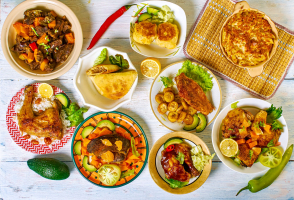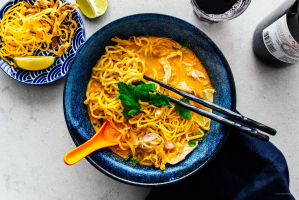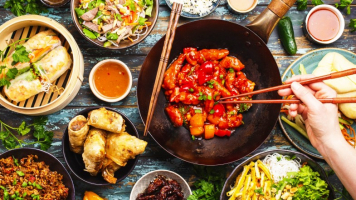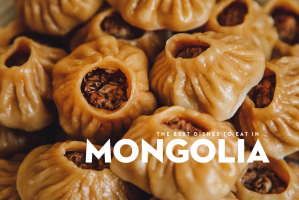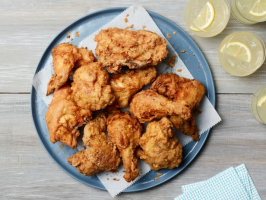Top 10 Best Foods In Gabon With Recipe
What are your thoughts on Gabonese cuisine? Many people feel that the cuisines of African countries are monotonous, which is not entirely right. Despite the ... read more...fact that culinary ingredients will be restricted in these arid places, Africans and Gabonese people will always try to be inventive in their cooking. Everyone wishes to prepare delicious meals for their everyday needs. Follow the list of 10 best foods in Gabon with recipe that you should not miss.
-
In the Bantu language of Myene, Nyembwe means "palm oil." Under different titles, it is also the national dish of the Republic of Congo, the Democratic Republic of the Congo (formerly Zaire), and Angola. It is also available in a few other varieties throughout Western and Central Africa. It goes well with white rice, plantain, pounded yam, and cassava.
Typically, the chicken used in this recipe is smoked ahead of time. The recipe is deemed basic because the only veggies used to improve the flavor are onions and garlic. As previously stated, the chicken and red palm oil are unquestionably the stars of this stew-like meal. Only a small amount of palm butter, garlic, and onion are required in addition to these two ingredients. It is undeniably an easy recipe.
The only thing that distinguishes them is usually their names. Chicken nyembwe is known as moambe chicken in the Democratic Republic of the Congo and is considered the country's national dish. In the Central African Republic, it is also known by this name. Meanwhile, it is known as moamba de galinha in Angola, while the dish's origins are thought to be entirely Brazilian. The preparation can also be tasted in Western countries, particularly in Belgium and Portugal (particularly in Lisbon this dish is very popular).
Ingredients
- 1 smoked chicken boneless, 16 oz. palm butter sauce graine, Red palm oil, 2 onions chopped, 3 cloves garlic crushed
Instructions
- Pour palm butter in a skillet. Add a glass of water and heat over medium heat.
- Skim oil which forms at the surface after a few minutes. Continue to cook over medium heat.
- Meanwhile, heat red palm oil in another pan.
- Add the onion. Sauté for 6-8 minutes.
- Add garlic and chicken. Sauté for a few minutes.
- Add chicken to palm butter. Stir and continue to cook for a few minutes.
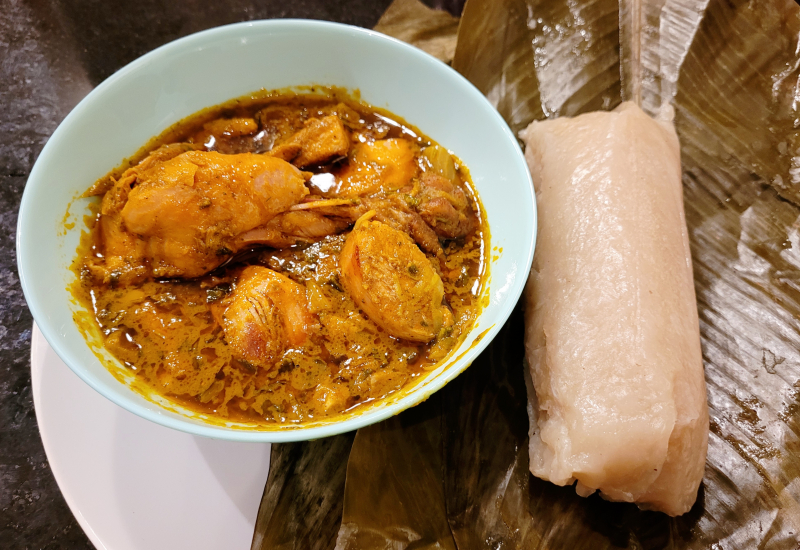
mobile.twitter.com 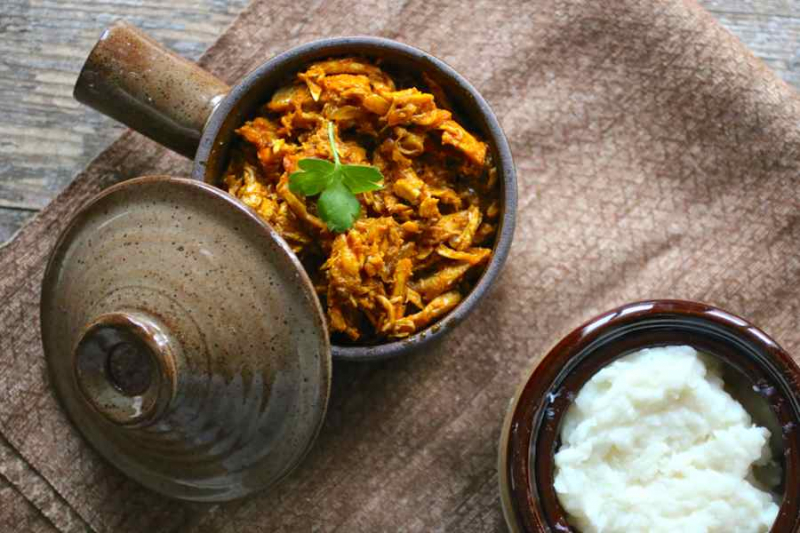
196flavors.com -
The premise of French brochettes is really simple - it's basically just meat on a stick. Perhaps the dish's simplicity is why there is no universally accepted origin. However, many historians believe that the dish's "format" predates the 14th century (1300s). The comparable kebab dates all the way back to the Ottoman Empire in the Middle East, while satay and shashlik date all the way back to the Silk Road in South and Southeast Asia. The French brochette dates back to French colonization in Africa. The term, like the concept of the meal, is French. It is still popular in African street food today.
In Rwanda, you can find skewers with beef or goat meat, fish, onions, and vegetables marinated with spices and grilled over charcoal in the streets and restaurants. When you order Brochette, you will be served with Pili Pili sauce and fried potatoes. Many African families pass this dish down to their younger generations as a way to keep traditions alive.
Ingredients
- 4 garlic cloves, finely chopped, ⅓ Kosher salt, 3 cup olive oil, tablespoons plain yogurt, 2 pounds skinless, boneless chicken thighs, cut into 2” pieces, 2 garlic cloves, chopped, ½ cup finely chopped fresh flat-leaf parsley, 2 teaspoons ground cumin, 2 teaspoons paprika, ¼ teaspoon crushed red pepper flakes, Kosher salt, Vegetable oil (for grilling), Warm pita bread, labneh (Lebanese strained yogurt), chopped tomatoes, and fresh mint leaves (for serving)
Instructions
- Place garlic in a mortar; season with salt and pound to a very fine paste. (Alternatively, place garlic on a cutting board, season with salt, and mash with the side of a chef’s knife.) Transfer garlic paste to a small bowl and gradually whisk in oil.
- Very gradually whisk yogurt into garlic mixture until emulsified. (Add too fast and sauce will break. If it does break, gradually whisk in 1 tsp. water just before serving.)
- Garlic sauce can be made 6 hours ahead. Cover and chill.
- Toss chicken, garlic, parsley, cumin, paprika, and red pepper flakes in a medium bowl; season with salt. Cover and chill at least 2 hours.
- Prepare grill for medium-high heat and oil grate. Thread chicken onto skewers. Grill, turning occasionally, until cooked through, 8–12 minutes. Serve with garlic sauce, pita bread, labneh, tomatoes, and mint.
- Chicken can be marinated 12 hours ahead. Keep chilled.
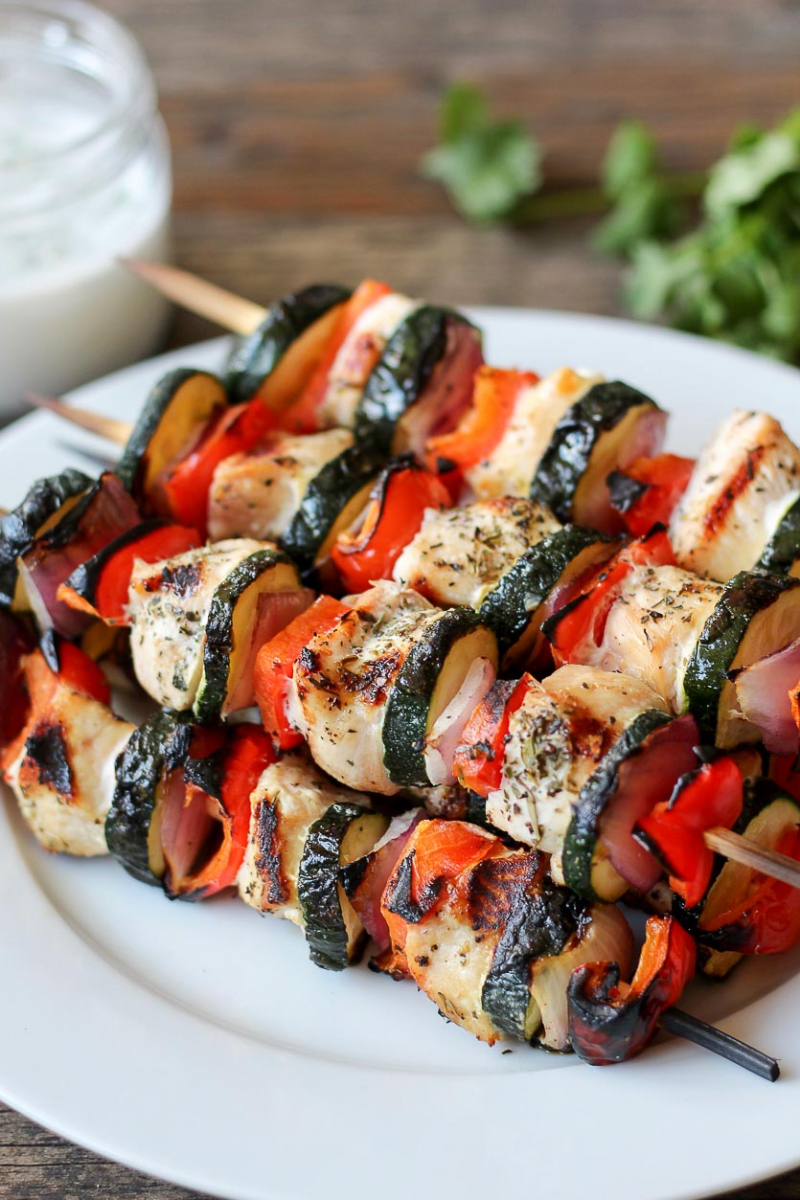
kaynutrition.com 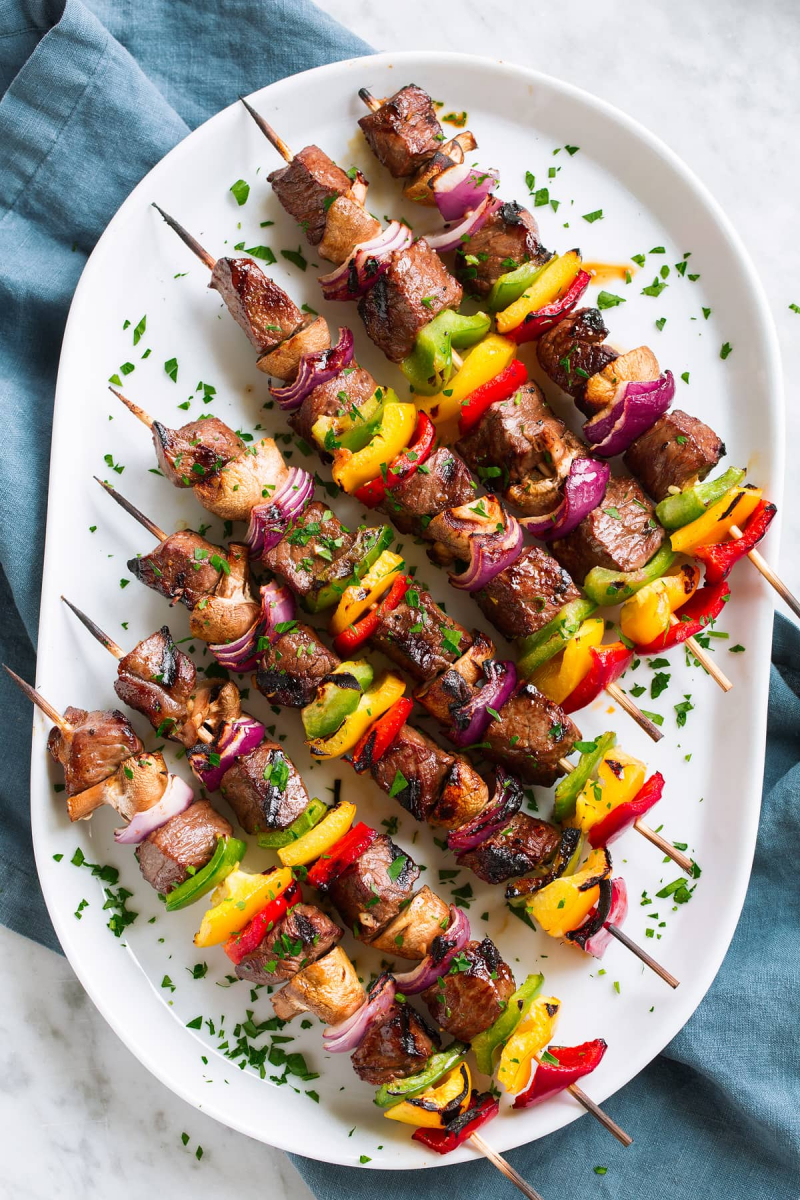
kaynutrition.com -
Besides the famous dishes Poulet Nyembwe or Brochettes, Gabon is also mentioned a lot with Dongo Dongo - a unique traditional dish that you definitely have to try when coming here. Dongo-dongo is a tasty African cuisine that includes okra as the main ingredient. It is classified as both a soup and a sauce. The mix of fish and okra may seem strange, but it's surprisingly wonderful.
Dongo Dongo is a versatile cuisine that is claimed to be a "relative" of the famed Cajun-Creole Gumbo. Dongo Dongo can be served as a sauce or soup with any starchy side dish, such as Fufu rice. Along with various ingredients like as hot peppers, stir-fried onions, and garlic are added to the Dongo Dongo pot. As a result, your dessert will not taste greasy.One more thing you may not know, okra has long been considered a food of the poor in Gabon, but as nutritionists capitalize on its benefits, it is becoming a weekly staple in local market. Research is still ongoing, but patients say okra has helped them control blood sugar in type 1, type 2, and gestational diabetes.
Ingredients
- 2-3 tbsp oil to sauté, 2 onions, cleaned and finely chopped, 2 hot chile peppers, cleaned and finely chopped, 20 or more okra, ends removed, cleaned, and chopped, 2-3 cloves of garlic, minced, 1-2 tbsp Arome Maggi sauce or two Maggi cubes , any amount of dried, salted, or smoked fish, cleaned and rinsed (use a little just as a flavoring, or enough for everyone to have a serving), a pinch of baking soda -- or—one can tomato paste (optional)
Instructions
- Heat oil in a deep pot. Sauté onions and garlic for a few minutes.
- Add Maggi sauce or Maggi cubes, okra, and peppers. Cook for several minutes.
- Add enough water to cover. Bring to a boil, then reduce heat and add fish.
- If desired, add the baking soda (for a gooey sauce) or the tomato paste (for a red sauce). Simmer until the okra and fish are tender.
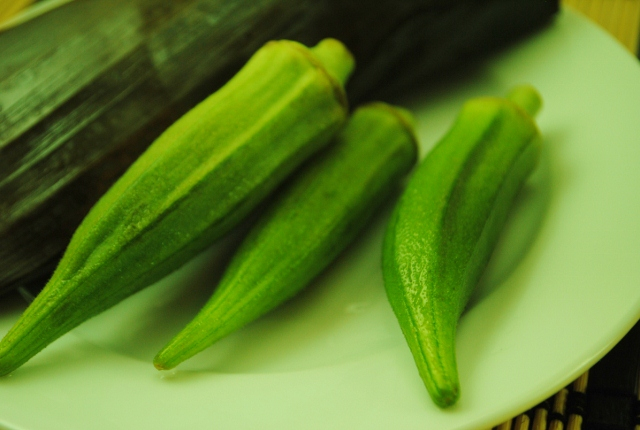
mypearlproject.wordpress.com 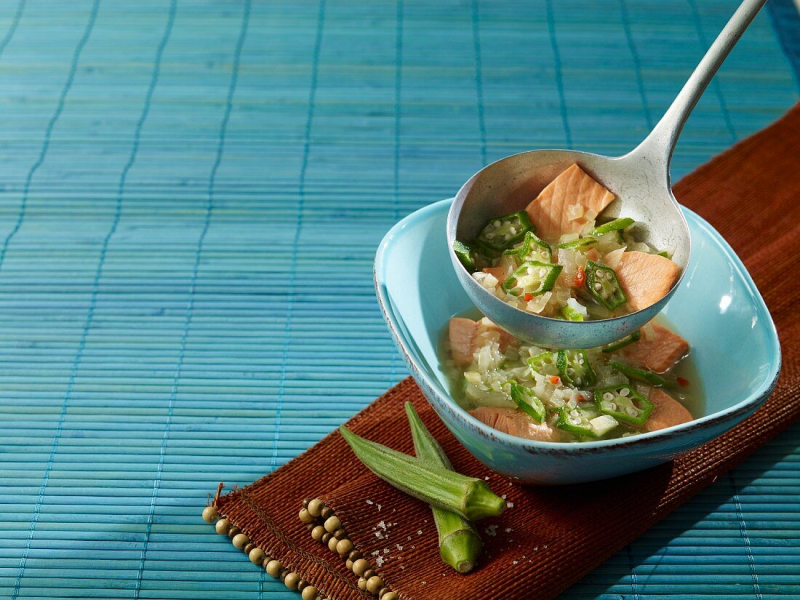
stockfood.se -
Poisson Salé is a well-known and healthful dish that can be found on any delectable Gabonese dinner table. The Snoek fish is dried and salted to preserve it for later consumption. The rustic Mauritian gastronomy stretches back to ancient times and is used in a variety of recipes. A delicious Rougaille Poisson Salé brings back memories of ancient iron-sheet dwellings and a modest existence. Riz Frit Poisson Salé (Salted Fish Fried Rice) used to be the satisfying dinner at the end of the week, or for some, every payday. It's the kind of comfort food that might feed a lot of people for a low cost while also brightening their day.
Given that making Poisson Salé leaves a lingering scent, the meal is not for everyone, but it is vital to try it at least once. If you haven't grown up with it, authentic Mauritian salted fish may be one of the foods you find difficult to consume. Rice is a good accompaniment to Poisson Salé. You can also drink it with attiéké (African fermented cassava semolina). The sourness of the cassava paste will complement the flavor of the fish stew and aid digestion.
Ingredients- 250 g salted fish (snoek), 2 medium chopped red tomatoes, 1 chopped onion, 1tsp garlic paste, 1 chopped green chilli (optional), 25 ml tomato puree, chopped coriander, 1 tsp lemon juice (optional), 3 tbsp olive oil( 60 ml)
Instructions
- Wash and boil the snoek for 5-10 minutes. Wash again to remove excess salt.
- Crumble to small size, removing the fish bones.
- Heat the olive oil in a medium sauced pan over a moderate heat. Fry the snoek until it has browned. Remove and set aside.
- Add onion in the same hot oil.
- Add garlic paste – chopped chilli-chopped tomatoes.
- Allow to simmer for some minutes. Add little water, cover to cook for 5-10 minutes
- Add the tomato and lemon juice(optional). Combine and cook until the sauce thickens
- Add the fried snoek, then sprinkle the coriander leaves. Remove from heat and serve!
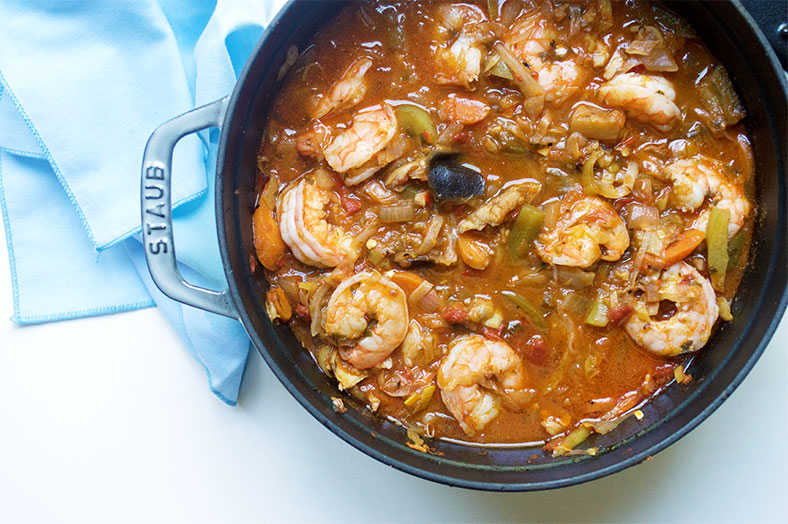
arousingappetites.com 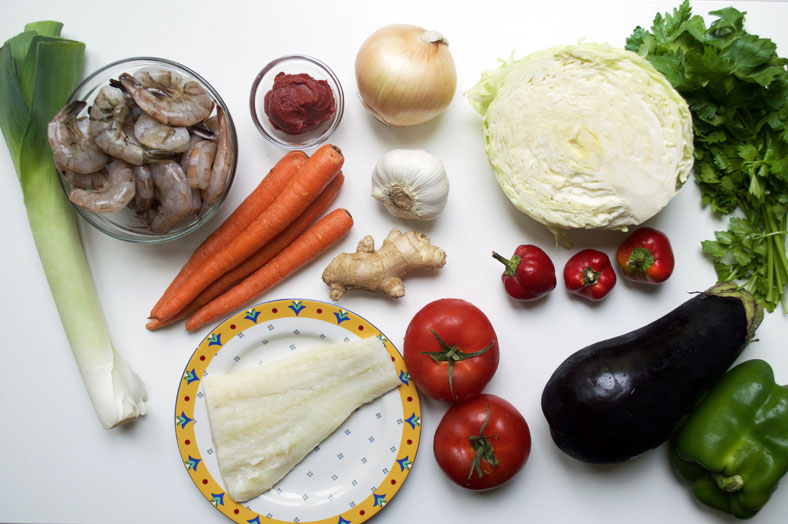
arousingappetites.com -
Bananas and plantains are popular ingredients in Gabon, where they are used in a variety of recipes, particularly sweets. Baked banana is a popular dessert in Gabon, and it may be found on practically every occasion or in everyday life. It can be found in other places of the world where bananas are abundant. This is true for the Caribbean and South Asia. Furthermore, no one knows the precise origin of this widely consumed food.
The crunchy side of breadcrumbs meets the soft side of baked bananas in oven-baked bananas. The addition of orange juice to the egg yolk balances the sweetness of the caramelized bananas. Furthermore, this is a basic and straightforward dish. As a result, they make an excellent snack at any time of day. Make sure the breadcrumb-coated bananas are completely submerged in the heated oil. If the oil is not hot enough, the breadcrumbs may come apart in the pan as soon as the bananas are dipped. The bananas would then absorb too much oil, making the dish difficult to digest.
Ingredients
- ½ cup vegetable oil, 3½ oz fresh breadcrumbs, 4 bananas, 1 egg, 2 tablespoons freshly squeezed orange juice, 4 tablespoons soft brown sugar, 4 tablespoons sour cream
Instructions
- Preheat oven to 325°F (170°C).
- Pour the oil into a skillet over a medium-high heat.
- Place the breadcrumbs into a shallow dish.
- Peel each banana, cut in half widthways, then in half again, lengthways.
- Beat the egg together with the orange juice in a medium-sized bowl.
- Dip each banana quarter into this mixture, and then roll in the breadcrumbs.
- Fry for 2 minutes or so on each side, until the breadcrumbs have become golden.
- Remove from the oil, and drain on some paper towels.
- Transfer the fried bananas to a baking sheet, and bake in the oven for 5 minutes.
- Remove from the oven, sprinkle with the brown sugar.
- Serve immediately with sour cream.
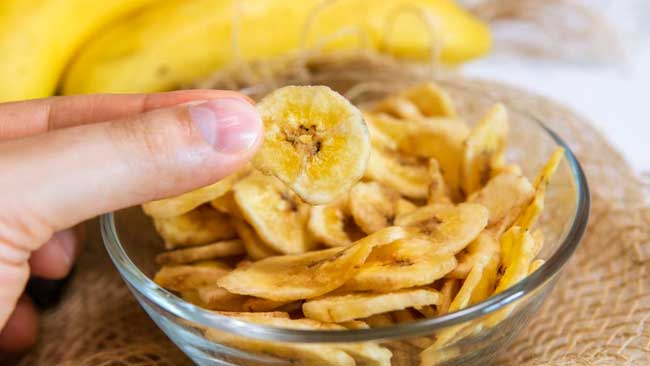
deshydrateraliments.com 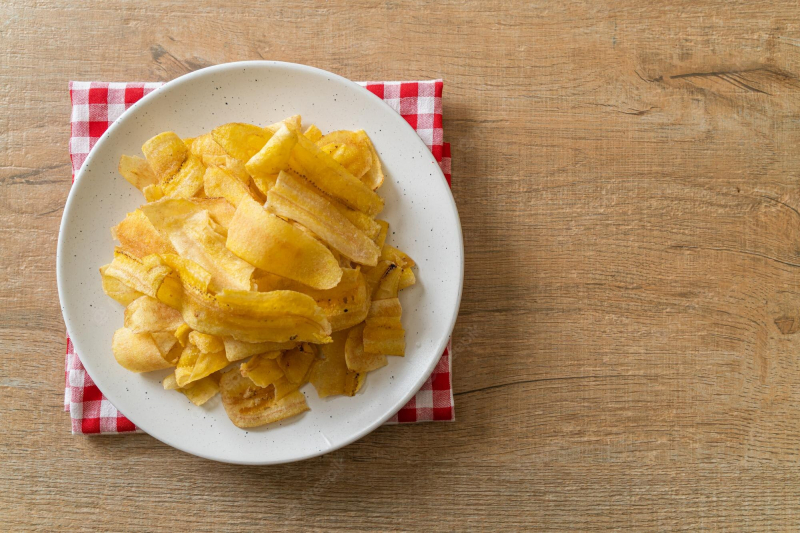
fr.freepik.com -
Congo Chewies, also known as Blondies in the Southeastern country, is one of the best foods in Gabon with recipe. They are chewy in the center and crispy on the outside. It is comparable to a chocolate chip cookie, except it is larger and thicker. As the name implies, this treat is not an authentic Gabonese delicacy; but, if you want something quick and light for breakfast during your Gabon trip, this is the one to try. Each bite will be divine. This delicacy is fairly simple to make; you will only need basic ingredients to form a great piece of Congo Bars. When you bite into this cuisine, you can taste sugar, butter, flour, eggs, and chocolate chips. Sometimes the charm is in the simplicity.
Although these delectable sweets originated in the Congo, they are popular in many African cuisines. There are several ideas as to where the name came from - who knows which one is correct? Some attribute the name of these thick cookie bars to the "Congo Room" in Las Vegas, while others attribute it to "Congo Square" in New Orleans. Others claim it's called after the African country of Congo, owing to the peculiar (and completely optional) cookie bar ingredient, crushed coconut.
Ingredients
- 3/4 cup salted butter, 2 1/4 cup brown sugar, 3 large eggs (room temperature), 2 3/4 cup all-purpose flour, 1/2 teaspoons baking powder, 1/2 teaspoon salt, 1 cup dark chocolate chips, 1 cup semi-sweet chocolate chips
Instructions
- Preheat oven to 325F, with rack on lower middle position. Grease and flour a 13x9 pan and set aside.
In the bowl of stand mixer fitted with paddle attachment, cream butter and sugar until light and fluffy, about 3-4 minutes. Add eggs and vanilla and stir until combined. - In a separate bowl, whisk together the flour, baking powder, and salt. Using rubber spatula, fold butter mixture with flour mixture just until incorporated. Fold in chocolate chips.
- Press dough into prepared pan, using spatula to even out the surface. Bake for 30-35 minutes, or just until top is lightly browned. It should look puffy, soft, and golden. Center will still be soft.
- Cool bars completely. Cut into squares. Store leftovers in airtight container at room temp.
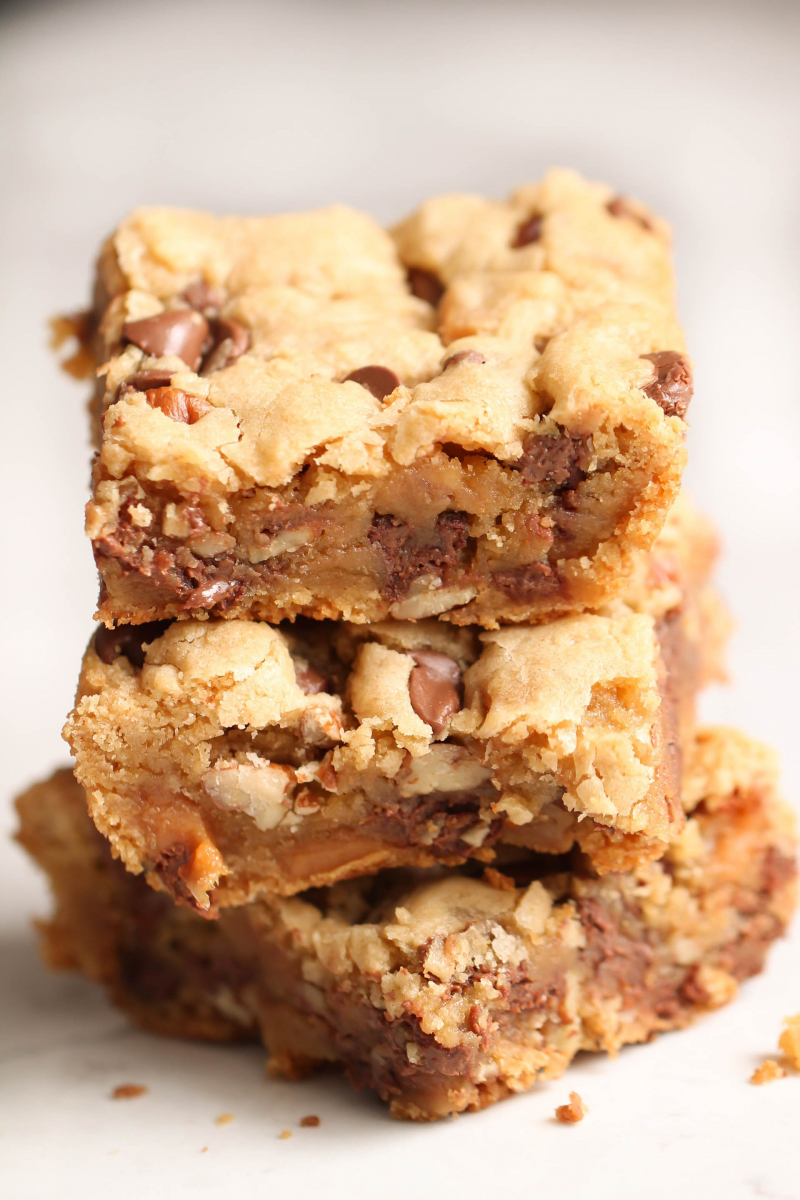
fountainavenuekitchen.com 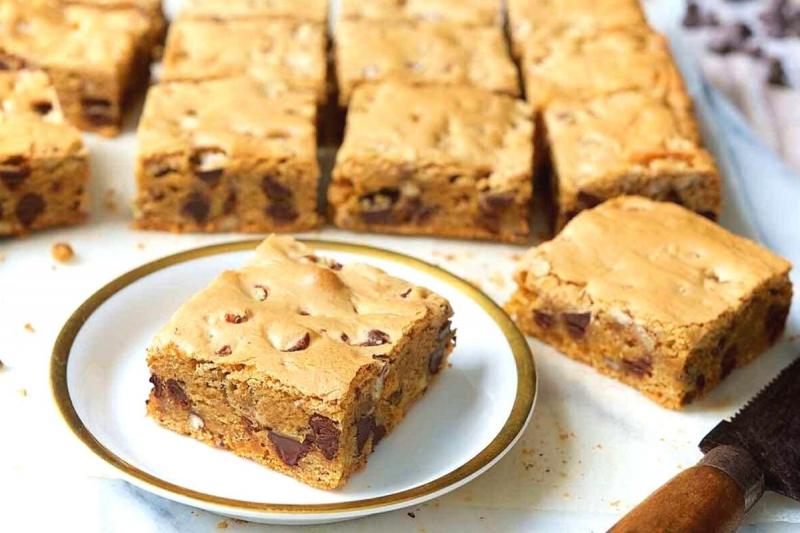
.sixsistersstuff.com -
Beignets are Gabonese pastries that were influenced by French cuisine (Gabon was a French colony for around 80 years). When you look at this delight, you think of little, crispy pillows, and the icing sugar makes you think of flaky white snow. This recipe, as a classic and traditional French recipe, will not yield the French Quarter-style beignets that are so popular in New Orleans. It is instead produced with choux pastry dough, which is also used to make cream puffs and éclairs. The moisture in the dough permits it to rise without the need of yeast because it is made with simply butter, water, flour, and eggs. This is what makes it the simplest type of beignets, and you can make them quickly.
These French beignets bubble up beautifully when deep-fried and are absolutely tasty. Because the batter has a significant proportion of eggs, the flavor is similar to that of French toast. It's a nice twist, a fun recipe to try, and they go great with fresh fruit or preserves. You can fry the beignets in a deep fryer or a pan deep enough to hold the oil. A deep fryer should allow you to control the temperature, but if you're using a pan, you'll need to use a thermometer.
Ingredients
- Vegetable oil, or canola oil, for deep-frying, 1/2 cup unsalted butter, 1 cup water, 1/4 teaspoon fine salt, 1 cup all-purpose flour, 4 large eggs, 3 tablespoons confectioners' sugar
Instructions
- Combine yeast, sugar and 1/2 cup (125ml) tepid water in the bowl of a stand mixer, stirring to dissolve yeast. Stand for 10 minutes or until yeast mixture bubbles.
- Add egg, condensed milk and a pinch of salt, and stir to combine. Add coconut oil, vanilla and half the flour, then, using the hook attachment, knead on low speed until combined. Add remaining flour and knead for 8 minutes or until smooth and elastic.
- Transfer dough to a large oiled bowl, cover with plastic wrap and set aside in a warm place for 2 hours to prove. (The dough won’t double in size, but will increase slightly.)
- Lightly dust 2 baking trays with flour. Place the dough onto a floured surface and roll out into a 1cm-thick slab. Cut dough into 5cm squares, re-rolling as necessary. Place on prepared trays and cover with a clean tea towel. Set aside for 30 minutes to rise slightly.
- Fill a large saucepan or wok one-third full with sunflower oil and heat to 170°C (a cube of bread will turn golden in 50 seconds when hot enough).
- Working in batches of 4-5, lightly pinch the edges of each square to create air pockets, then gently drop into oil and deep-fry, turning halfway, for about 5 minutes or until crisp, golden and cooked through. Remove with a slotted spoon and drain on paper towel.
- Dust beignets generously with icing sugar and serve warm.
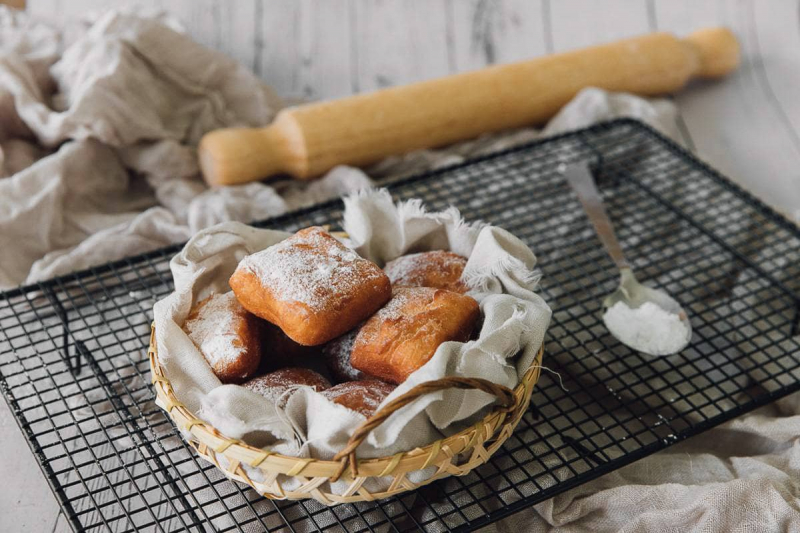
cooking.nytimes.com 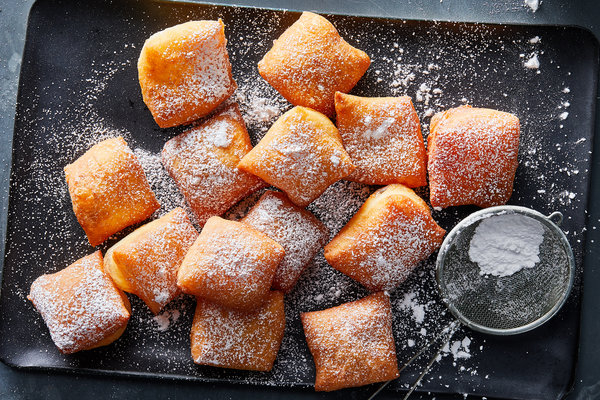
polkadotpassport.com -
Fufu (or foofoo or foufou) is one of the the best foods in Gabon with recipe. It is a full side dish that is starchy, silky, dense, and stretchy. It is popular because it is delicious, simple, gratifying, and simple to make. Fufu is simple to make and delicious. It is not eaten on its own, but rather with a rich and savory soup or stew, such as egusi soup, okra soup, ewedu soup (Jute leaves), or light soup. It complements soups/stews and proteins well because it is easy to swallow and does not require chewing, making it a cuisine that people of all ages may enjoy together.
Cassava, often known as yuca, is used to make foofoo. It's a starchy root vegetable that's related to sweet potatoes, russet potatoes, and yams. It can be fried, baked, and served similarly to potatoes; but, when converted into fufu, it becomes incredibly smooth, doughy, and elastic. Though historically produced from cassava, the definition of fufu has evolved through time to encompass a wide range of digestible foods such as eba, green plantains, amala, cocoyam, corn, pounded yam, semolina, and many more.
Ingredients
- 1 Yuca root cassava, 1 plantain Green, ¼ cup water
Instructions
- Peel the cassava, slice the tuber half lengthwise, remove the inner wooden core, and dice the potatoes into small cubes.
- Peel the plantain and cut it into small cubes
- Add everything inside the blender and blend till a smooth batter is formed.
- Pour the batter into a pot, place it on the stovetop over medium heat and begin stirring until a thick, paste-like doughy fufu is formed.
- Add a splash of water, cover, and leave to cook for 5 minutes on low to medium heat. Feel free to cook a little longer if you feel the fufu is not yet cooked. Stir well.
- Divide the fufu into individual sizes and wrap each with plastic wrap.
- Serve with your desired soup or stew.
- Pour the batter inside a safe microwave bowl, cover with a microwave-safe lid. Place in the microwave for 5 minutes.
stir well until smooth - Add a splash of water and return inside the microwave to cook till fully done—about 5 to 8 minutes.
- Stir again, divide into individual sizes and wrap each with plastic wrap.
- Serve with your desired soup or stew.
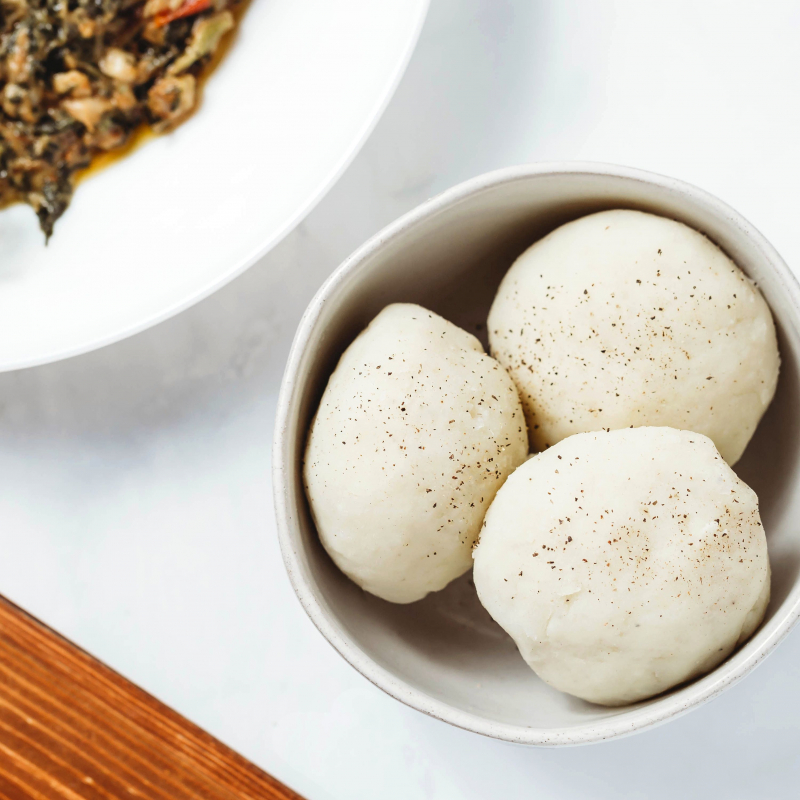
cheflolaskitchen.com 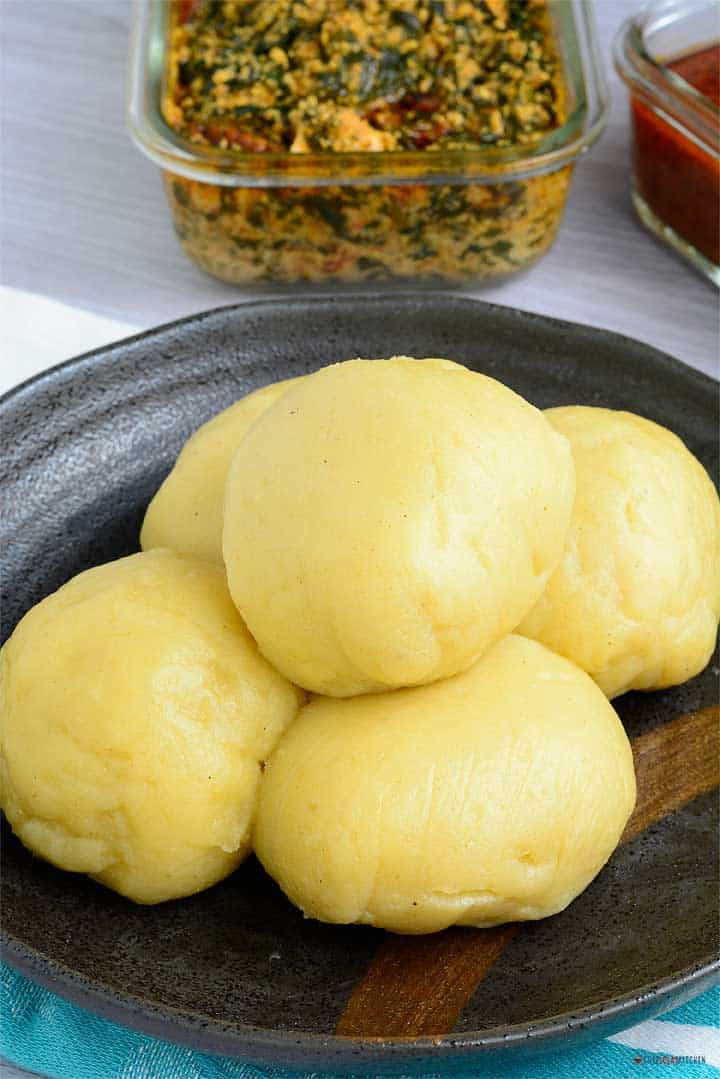
pinterest.com -
What is it about this fruit that makes it stand out on this list? This unique Atanga will delight your taste buds from the first bite. It contains vitamins A, B1, B3, D, and C. The most striking feature of Butter fruit advantages is that 47% of the fruit contains fat. When cooked, the fruit has the consistency of butter and is incredibly nutritious. Fat does not build in the body as a result of the amino acids in it. It is employed in the treatment of skin conditions.
Atanga is high in vitamins A and C, as well as magnesium, potassium, and calcium. The fruit also has a high oil content and a high concentration of vital amino acids like threonine, lysine, and leucine, which enable the body accomplish all necessary processes like tissue repair, nutrient transport, and digestion. Boiling the fruit, removing the outer shell, and eating the inside alone or with salt/sugar to taste is the most recommended way to enjoy Atangas. When biting, you may expect an avocado-like texture and the tartness of a moderate olive.
Ingredients
- Atanga (Dacryodes Edulis / Butter Fruit)
Instructions
- Wash Atanga gently but thoroughly to get rid of sand.
- Bring water to a boil.
- Once boiled, dunk the Atanga in it for no longer than 3 minutes and strain. (You can salt the water if you like but it’s unnecessary
- Atanga can also be steam cooked, cooked over a coal fire, placed on top of a hot pot to cook. It pretty much needs just a little bit of heat.
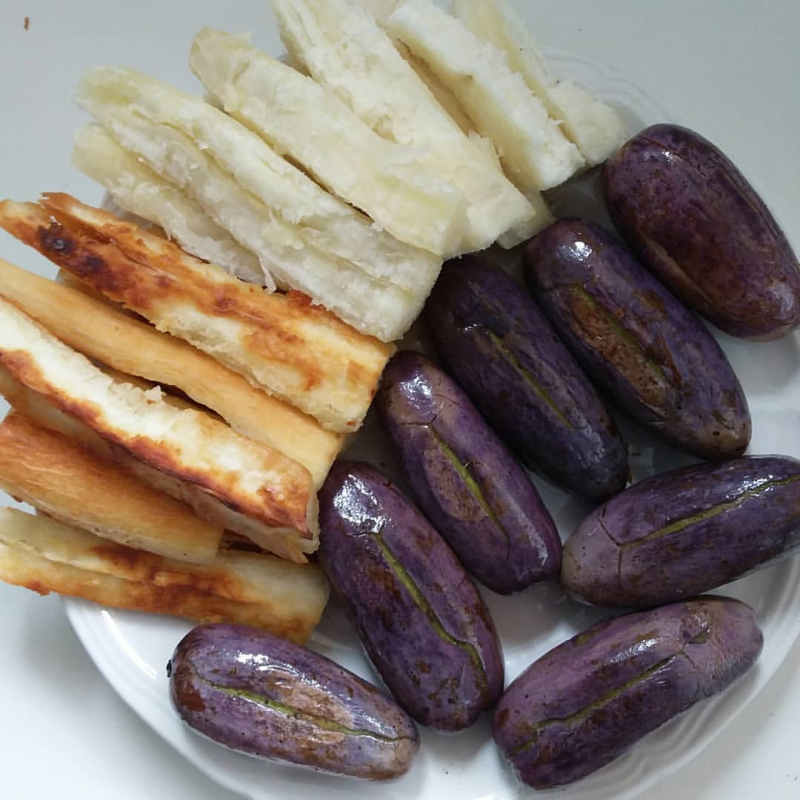
twitter.com 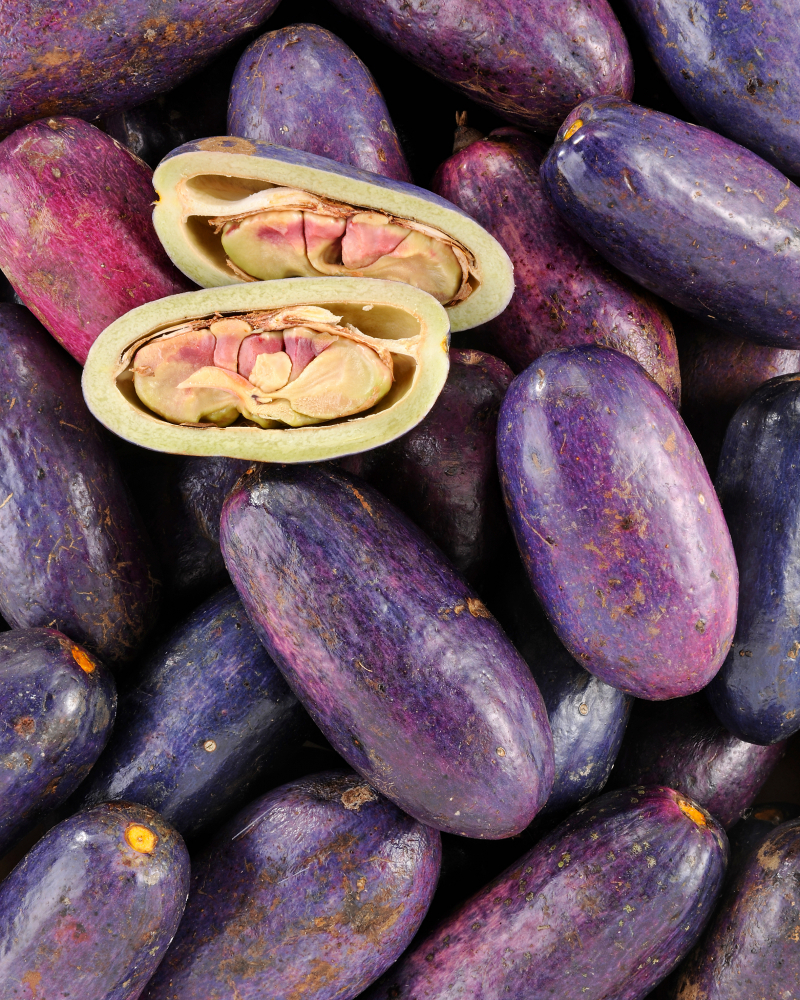
twitter.com - Atanga (Dacryodes Edulis / Butter Fruit)
-
Plantain fritters are fried batters prepared from very ripe plantains, simple flour, and sugar, salt, and spices. In Jamaica, they are generally eaten for breakfast and are sweet and soft. These fritters are created in the same manner as banana fritters and have a similar flavor, however banana fritters are not as filling. Make sure your plaintains are completely black for this recipe, as the fruit becomes sweeter as it ripens. (Yellow or mottled brown plantains are extremely starchy and require approximately a week to fully ripen.)
Under high heat, the best qualities of very ripe plantains are revealed: their sugars caramelize, making each bite sweet and providing contrasting crunchy and tender textures. Mashed ripe plantains with all-black peels are combined into an aromatic batter with cornmeal for a thrilling crunch and sour cream for a pillowy delicacy in these fritters. They're a terrific snack or addition to any meal on its own, but can also be served with a garlicky fry sauce for dipping if desired.
Ingredients
- 1 cup all-purpose flour, 2 tablespoons light brown sugar, 1 teaspoon baking powder, 1/8 teaspoon salt, 1/2 cup water, 1 large egg, lightly beaten, 4 very ripe (completely black) plantains (2 1/2 lb), 1/2 cup granulated sugar, 1/2 teaspoon cinnamon, About 2 cups vegetable oil
Instructions
- Whisk together flour, brown sugar, baking powder, and salt in a large bowl, then add water and egg and whisk until batter is smooth.
- Peel plantains and cut on a slight diagonal into 1/2-inch pieces. Stir into batter to coat well.
- Stir together granulated sugar and cinnamon in a shallow bowl.
- Heat 1/2 inch oil in a 10-inch heavy skillet over moderate heat until thermometer registers 340°F. (See cooks' note, below.) Fry plantain slices in batches of 6 (don't crowd them) until bottoms are golden, about 45 seconds, then turn over and fry until other side of each is golden, 30 to 45 seconds more. Transfer with a slotted spoon to paper towels to drain.
- While still warm, toss each batch in sugar mixture until coated, then transfer to a platter. Serve hot or warm.
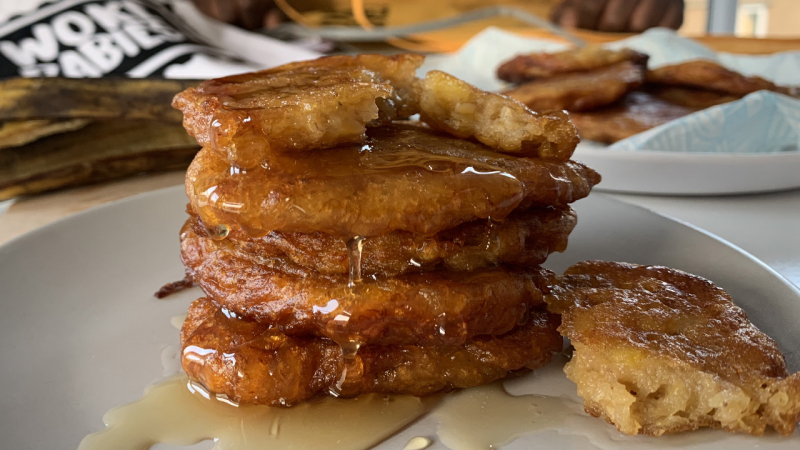
tasteofhome.com 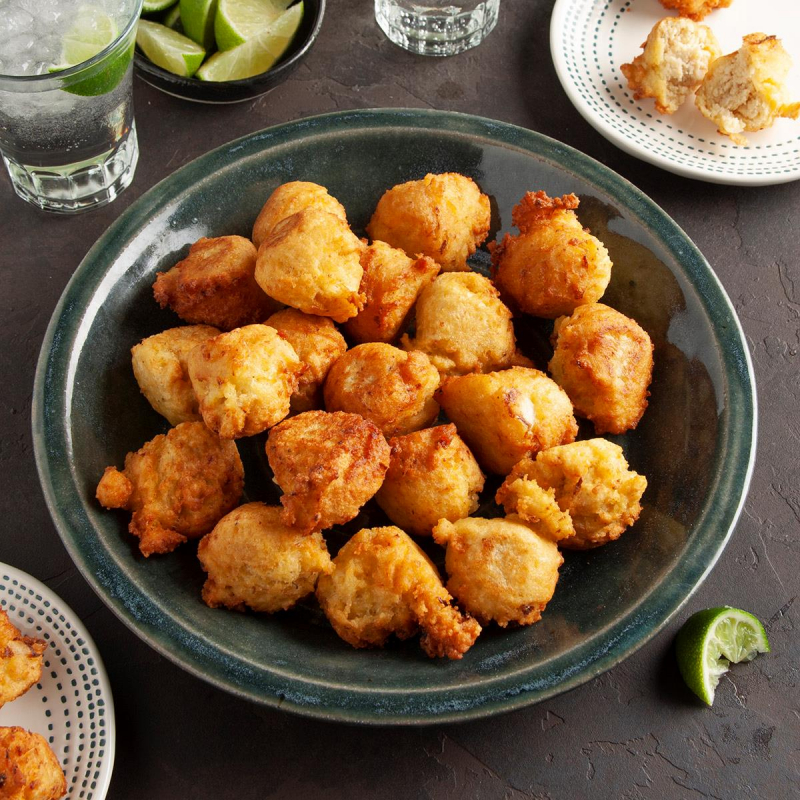
originalflava.com - 1 cup all-purpose flour, 2 tablespoons light brown sugar, 1 teaspoon baking powder, 1/8 teaspoon salt, 1/2 cup water, 1 large egg, lightly beaten, 4 very ripe (completely black) plantains (2 1/2 lb), 1/2 cup granulated sugar, 1/2 teaspoon cinnamon, About 2 cups vegetable oil












